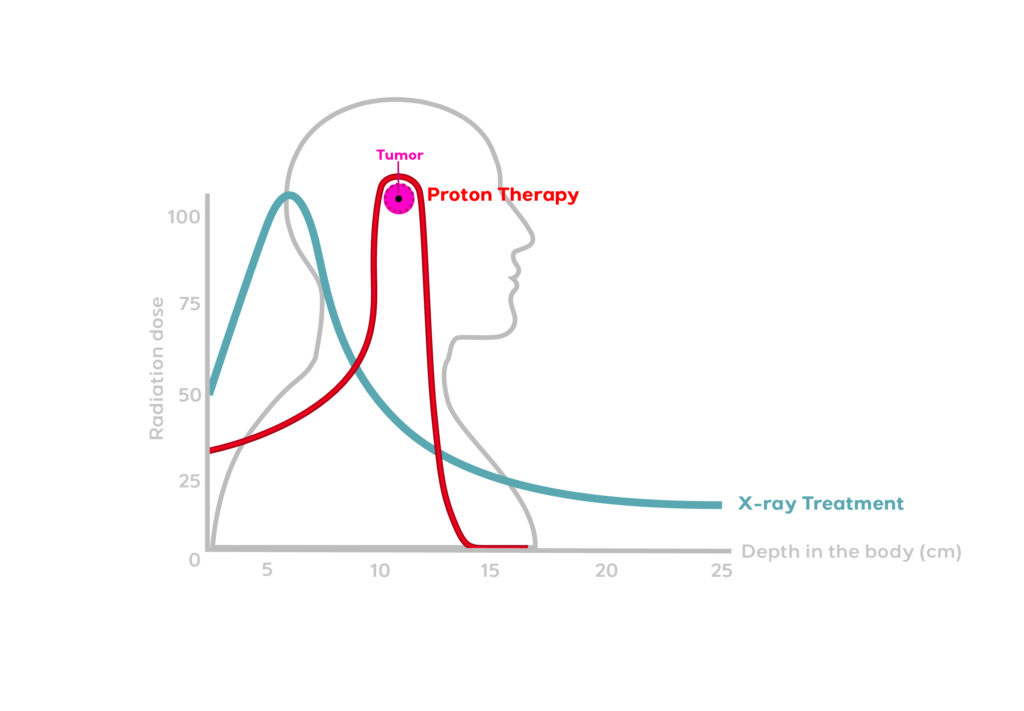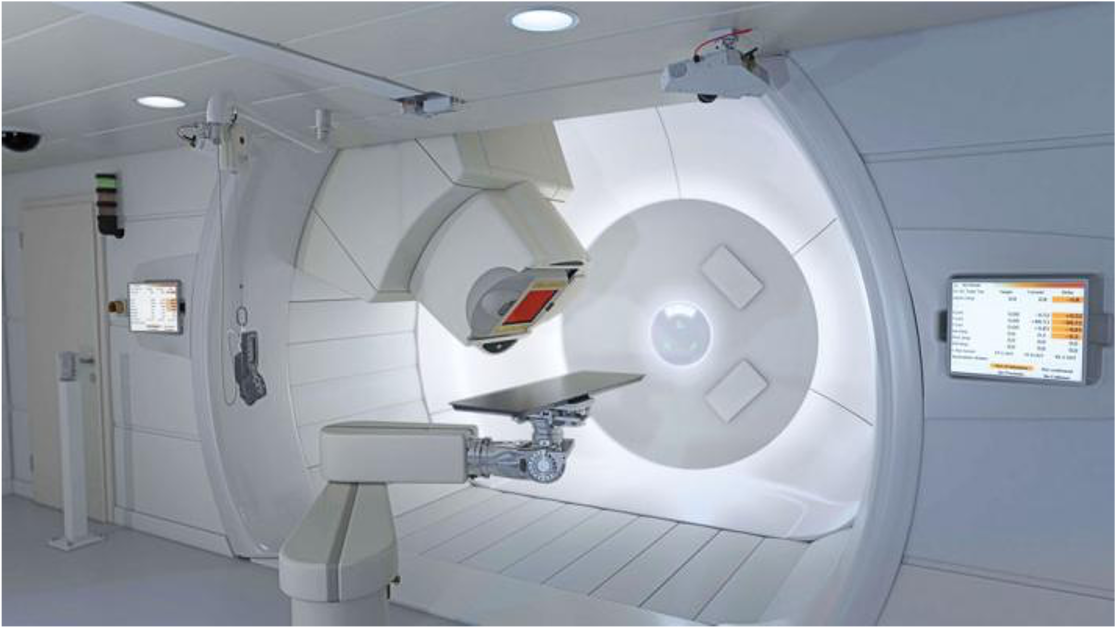
Proton Therapy vs Standard Radiation
Both proton therapy and standard radiation treat tumors the same way: by inhibiting the growth of cancer cells. Standard radiation therapy utilizes x-rays which deposits the majority of the radiation dose immediately upon entering the body while traveling to the tumor. After depositing radiation dose in the tumor, the x-rays continue traveling through the body until exiting out the other side, potentially affecting healthy tissues and organs.
The largest difference between the two is that the protons slowly deposit their energy as they travel towards the cancerous tumor and then due to a unique physical characteristic called the Bragg Peak, deposit the majority of the radiation dose directly in the tumor and travel no further through the body. This results in less damage to surrounding healthy tissues and organs.
These unique advantages of proton therapy means a more targeted approach, resulting in more impact on the tumor and increased tumor control. Because of this, radiation oncologists are able to increase the radiation dosage while causing lesser damage than standard radiation to surrounding healthy tissues and organs. This makes proton therapy suitable for cancers in sensitive areas, where other treatments might damage surrounding healthy cells.
Proton Therapy
Proton therapy, also known as Proton Beam Therapy, is an advanced form of radiation treatment that uses a beam of protons to destroy cancer cells.
During treatment, radiation oncologists and experts deliver the high-energy proton beams directly to the tumor, attacking the cancer cells while causing minimal damage to the surrounding healthy tissues.

Key Advantages of Proton Therapy
What to Expect During Proton Therapy
Before your first proton therapy treatment, you will have a consultation with the radiation doctor who will manage the proton therapy treatments. During this visit, the doctor will examine you and explain the treatment options that he or she recommends for you. Your cancer treatment plan may include proton therapy alone, in conjunction with other cancer treatments, or another cancer treatment option altogether.
If proton therapy is recommended, a series of planning sessions will help cancer specialists and physicists to develop your individualized cancer treatment plan.
During the CT simulation appointment, the radiation oncologist will obtain a 3-D picture of your tumor using CT, MRI or PET scanning. These data and images are used to reconstruct the tumor and the adjacent normal structures. This allows for accurate and precise dose targeting to the tumor and projection of normal tissues.
Simulation is a preparatory session during which the patient is placed in treatment conditions. It checks that the treatment position determined by dosimetry is feasible, and ensures that the patient can tolerate it. This lasts between one and two hours, and is performed a few days before the start of radiotherapy.
Proton beam therapy is an outpatient treatment where patients can resume their daily activities after treatment. For most tumors, a standard course of treatment is delivered 5 days a week for several weeks (2-8 weeks). The delivery of the proton beam to the patient lasts only a few minutes, although the total time spent in the treatment room will take longer for positioning and adjustments to the equipment settings (The length of each treatment will vary depending upon the tumor type and stage).
About four to six weeks after you complete all of your proton therapy treatments, you will have your first follow-up appointment with your radiation doctor. Your doctor will examine you, check your progress, discuss any test results and answer questions you may have.
